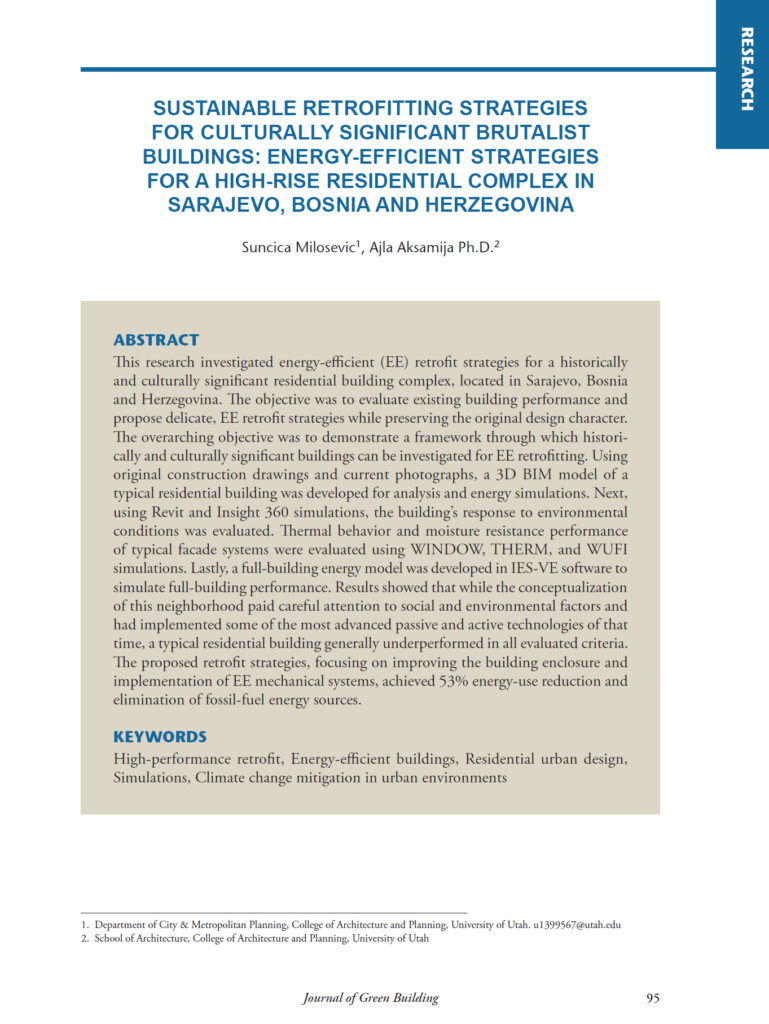
“Sustainable Retrofitting Strategies for Culturally Significant Brutalist Buildings: Energy-Efficient Strategies for a High-Rise Residential Complex in Sarajevo, Bosnia and Herzegovina” investigated energy-efficient (EE) retrofit strategies for a historically and culturally significant residential building complex. The objective was to evaluate existing building performance and propose delicate, EE retrofit strategies while preserving the original design character. The overarching objective was to demonstrate a framework through which historically and culturally significant buildings can be investigated for EE retrofitting. Using original construction drawings and current photographs, a 3D BIM model of a typical residential building was developed for analysis and energy simulations. Next, using Revit and Insight 360 simulations, the building’s response to environmental conditions was evaluated. Thermal behavior and moisture resistance performance of typical facade systems were evaluated using WINDOW, THERM, and WUFI simulations. Lastly, a full-building energy model was developed in IES-VE software to simulate full-building performance. Results showed that while the conceptualization of this neighborhood paid careful attention to social and environmental factors and had implemented some of the most advanced passive and active technologies of that time, a typical residential building generally underperformed in all evaluated criteria. The proposed retrofit strategies, focusing on improving the building enclosure and implementation of EE mechanical systems, achieved 53% energy-use reduction and elimination of fossil-fuel energy sources.
Citation:
Milosevic, S., and Aksamija, A., (2024). “Sustainable Retrofitting Strategies for Culturally Significant Brutalist Buildings: Energy-Efficient Strategies for a High-Rise Residential Complex in Sarajevo, Bosnia and Herzegovina”, Journal of Green Building, Vol. 19, No. 2, pp. 95-122, DOI: 10.3992/jgb.19.1.95.
